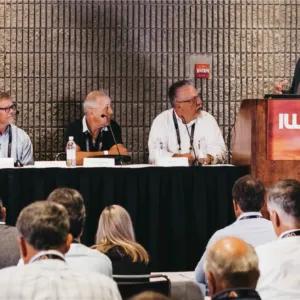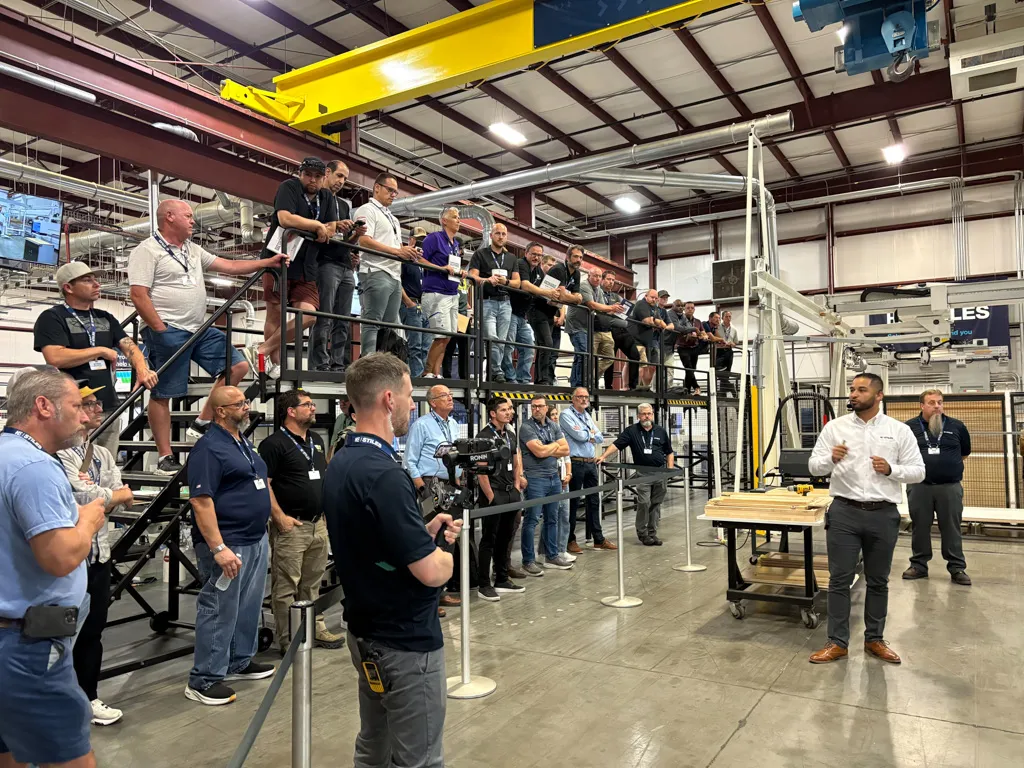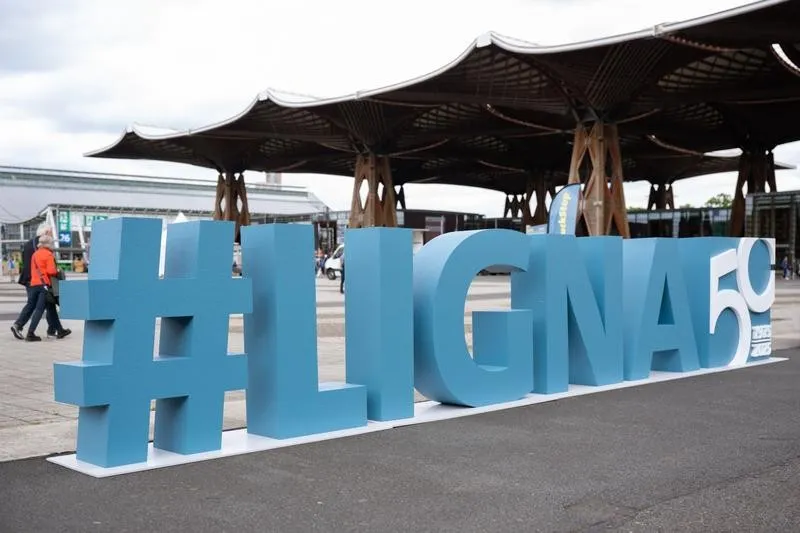Table of Contents
As Ron Gilboa explains it, the need to produce short-run, cost-effective decorative surfaces combined with ongoing development in digital inkjet printing has created a “perfect storm for the technology to meet woodworking’s market needs.”
With that backdrop, some 60 people gathered in Atlanta at the beginning of the biannual International Woodworking Fair for the inaugural Digital Printing Symposium. The event was created by IWF, Surface & Panel magazine and Keypoint Intelligence.
Participating in this inaugural symposium were industry-leading companies such as Barberan, Baumer, Cefla Finishing and Schattdecor, as well as household names from the graphic arts industry such as Canon and Vanguard Digital Printing Systems. While the companies may appear to work in different sectors, they share a common goal of meeting the growing needs of suppliers and addressing the mass customization in an 11 billion-square-meter-per-year décor market and a $140 billion annual woodworking industry in the U.S. alone.
In his opening presentation, Gilboa, who is group director of production technology for Keypoint, laid out key dynamics in the market, namely the continued demand by consumers for richly decorated surfaces customized to their needs and the desires of architects and contractors looking to add unique elements to their projects.
Gilboa emphasized the efficiency and versatility that digital printing offers the woodworking industry. It improves efficiency by allowing just-in-time manufacturing and by reducing inventories, waste and obsolescence of designs, and its versatility means it can create décor surfaces for laminates used in casework, countertops and flooring and also print directly on boards.
In his presentation, Roland Heeger, chief technology officer at Schattdecor, noted that digital printing offers opportunities to create products that were impossible with rotogravure, such as designs that exceed 15 feet’ in length—or larger than the typical circumference of a gravure cylinder. Also possible are “rainbow rolls” of décor paper, which feature different designs tailored to client needs vs. the typical one-ton minimum for one design with traditional printing.
Don Kuser, general manager of North American Plywood, told the symposium audience about his company’s full production line for manufacturing decorated board. From sanding and priming to digital printing and coating, NAPC meets its clients’ needs for “digital staining” of natural wood and veneers, as well as printing on panels that require full coating, Kuser said.
The equipment suppliers highlighted the opportunities that digital printing offers to small and large producers alike. They all noted that successfully implementing digital printing requires the proper investment, not only in technology but—more important—in a clear business strategy, production workflow, quality assurance and trained staff.
After the event, Grant Burkholder of Sauder Woodworking summed up his thoughts on digital printing: “The capabilities—creating depth of pattern, reproducing wood species, using pigmented inks—are amazing.”









